
The transport system of Finland is well-developed. Factors affecting traffic include the sparse population and long distance between towns and cities, and the cold climate with waterways freezing and land covered in snow for winter.

Rovaniemi is a city in Finland and the regional capital of Lapland. It is located near the Arctic Circle in the northern interior of the country. The population of Rovaniemi is approximately 65,000, while the sub-region has a population of approximately 69,000. It is the 17th most populous municipality in Finland, and the 12th most populous urban area in the country.

VR-Group Plc, commonly known as VR, is a government-owned railway company in Finland. VR's most important function is the operation of Finland's passenger rail services with 250 long-distance and 800 commuter rail services every day. With 7,500 employees and net sales of €1,251 million in 2017, VR is one of the most significant operators in the Finnish public transport market area.
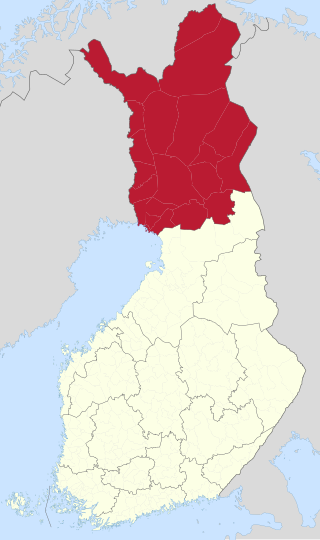
Lapland is the largest and northernmost region of Finland. The 21 municipalities in the region cooperate in a Regional Council. Lapland borders the region of North Ostrobothnia in the south. It also borders the Gulf of Bothnia, Norrbotten County in Sweden, Finnmark County and Troms County in Norway, and Murmansk Oblast and the Republic of Karelia in Russia. Topography varies from vast mires and forests of the South to fells in the North. The Arctic Circle crosses Lapland, so polar phenomena such as the midnight sun and polar night can be viewed in Lapland.
Sub-regions are divisions used for statistical purposes in Finland. The country is divided into 69 sub-regions, which are formed by groups of municipalities within the 19 regions of Finland. These sub-regions represent a LAU 1 level of division used in conjunction with the Nomenclature of Territorial Units for Statistics.

The Finnish railway network consists of a total track length of 9,216 km (5,727 mi). The railways are built with a broad 1,524 mm track gauge, of which 3,249 km (2,019 mi) is electrified. Passenger trains are operated by the state-owned enterprise VR that runs services on 7,225 km (4,489 mi) of track. These services cover all major cities and many rural areas, though the coverage is less than the coverage provided by the bus services. Most passenger train services originate or terminate at Helsinki Central railway station, and a large proportion of the passenger rail network radiates out of Helsinki. VR also operates freight services. Maintenance and construction of the railway network itself is the responsibility of the Finnish Rail Administration, which is a part of the Finnish Transport Agency. The network consists of six areal centres, that manage the use and maintenance of the routes in co-operation. Cargo yards and large stations may have their own signalling systems.
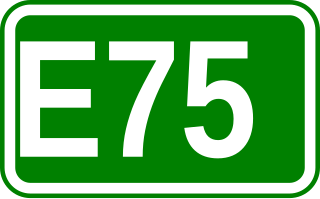
European route E 75 is part of the International E-road network, which is a series of main roads in Europe.
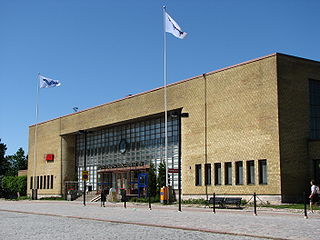
Turku Central Station is a railway station in the VII District of Turku, Finland. It has VR services to Helsinki and towards Joensuu. The station serves approximately a million passengers annually.

Public transport in Helsinki consists of bus, tram, metro, local railway and ferry services. The system is managed by the Helsinki Regional Transport Authority and covers Helsinki, Espoo, Kauniainen, Vantaa and the outlying Kerava, Kirkkonummi, Sipoo and Tuusula.
A postbus is a public bus service that is operated as part of local mail delivery as a means of providing public transport in rural areas with lower levels of patronage, where a normal bus service would be uneconomic or inefficient. Postbus services are generally run by a public postal delivery company and combine the functions of public transport and mail delivery and collection. A standard passenger fare is payable to the driver or mail carrier.
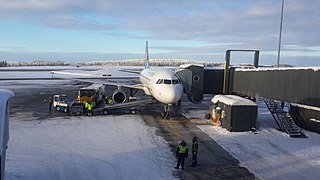
Rovaniemi Airport is the second busiest Airport in Finland after Helsinki-Vantaa, as measured by the number of passengers and landings. It's located in Rovaniemi, Finland, about 10 kilometres (6 mi) north of Rovaniemi city centre. The Arctic Circle crosses the runway closer to its northern end.

Although Finland has no dedicated high-speed rail lines, sections of its rail network are capable of running speeds of up to 220 km/h (137 mph). The Finnish national railway company VR operates tilting Alstom Pendolino trains. The trains reach their maximum speed of 220 km/h (137 mph) in regular operation on a 75.7 km (47.0 mi) route between Kerava and Lahti. This portion of track was opened in 2006. The trains can run at 200 km/h (124 mph) on a longer route between Helsinki and Seinäjoki and peak at that speed between Helsinki and Turku. The main railway line between Helsinki and Oulu has been upgraded between Seinäjoki and Oulu to allow for trains to run at speeds between 160 km/h (99 mph) and 200 km/h (124 mph). Other parts of the Finnish railway network are limited to lower speed.

The European route E8 is a European route that runs between Tromsø, Norway and Turku, Finland. The length of the route is 1,410 kilometres (880 mi).
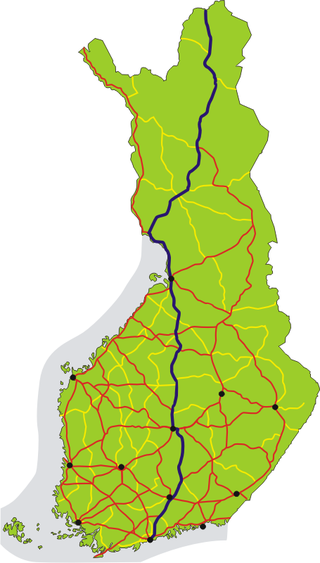
Finnish national road 4 is a highway in Finland. It is the main route from Helsinki to Northern Finland and a major road link in the country. It runs from Erottaja in Helsinki to Sami Bridge in Utsjoki. The road is 1,295 kilometres (805 mi) long, making it Finland's longest highway. The road is also part of the European route E75 and it is a part of TERN; the section between Oulu and Kemi is part of the European route E8.
As of 2009, Finland has used three models for local public transport. The implementation of these models was regulated by national laws of passenger transport, which were abolished after European Union regulations and laws of public transport service (869/2009) came into effect on December 3, 2009. The Finnish government-owned railways are regulated by specific laws. The local railways in Helsinki are regulated by the city's own laws and regulations.
The history of rail transport in Finland began on January 31, 1862, with the opening of the railway line between Helsinki and Hämeenlinna. By 1900 most of the future main lines had been constructed, including the line to St. Petersburg. By the time of the birth of the new Finnish Republic in 1917 lines connected all major cities, major ports, and reached as far as the Swedish border, and inner Finland as far north as Kontiomäki in Paltamo region, as well as eastwards into Karelia.

Highways in Finland, or Main roads, comprise the highest categories of roads in Finland:

OnniBus.com is a Finnish express coach operator. It commenced operating in 2011.

Riihimäki–Tampere railway is a railway running between the Riihimäki railway station and the Tampere railway station in Finland, and it is part of the Finnish Main Line. The line between Riihimäki and Hämeenlinna was opened in 1862 as a part of the Finland's first railway between Helsinki and Hämeenlinna, and the line between Riihimäki and Tampere in 1876.















